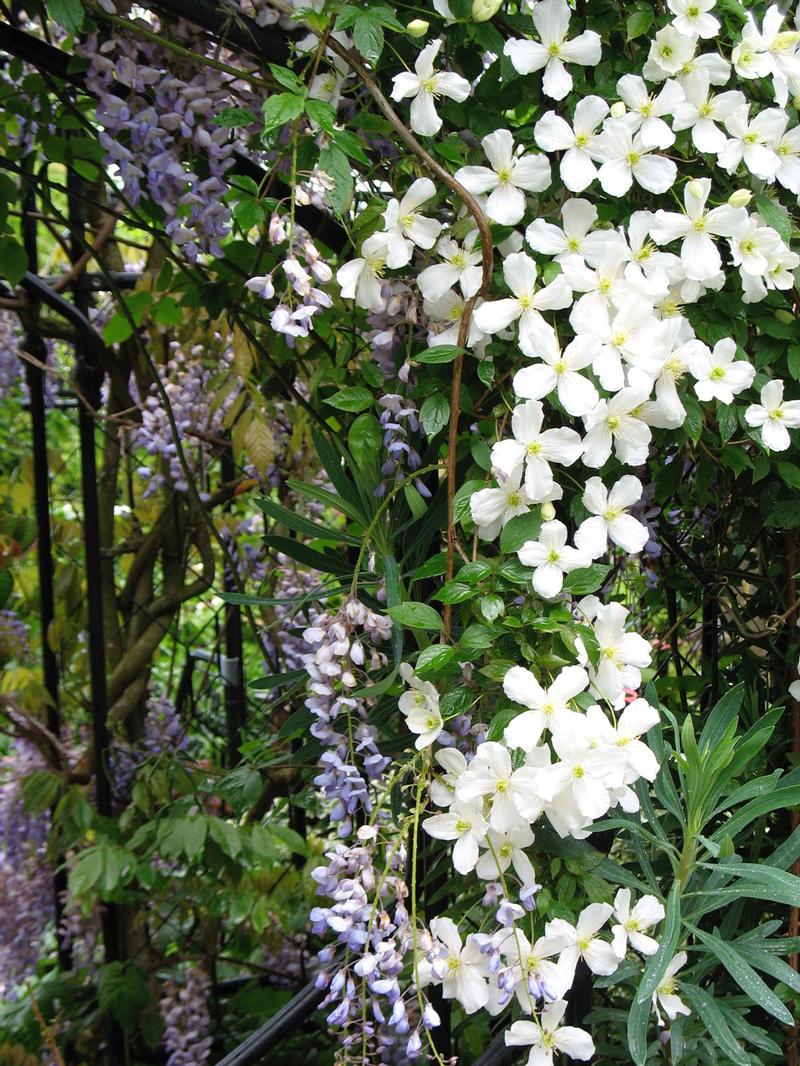White Flowers and How to Use Them Most Effectively
Though white is not considered a color, in a garden it can be an exciting design tool. You can use white to create many different moods and styles, from crisp and modern to cottage garden casual. Here are some tips for putting white to work in your flower garden.
Shades of White
Flowers that we call “white” are rarely pure white. In most cases they are either cool whites (with tints of blue) or warm whites (with tints of yellow or pink). Knowing which direction your white flowers lean, will help you decide where to locate them for best effect.
As you may imagine, it’s best to pair cool white flowers with cool colors and warm white flowers with warm colors. Keep in mind that white reflects light and is easily influenced by whatever colors are nearby.
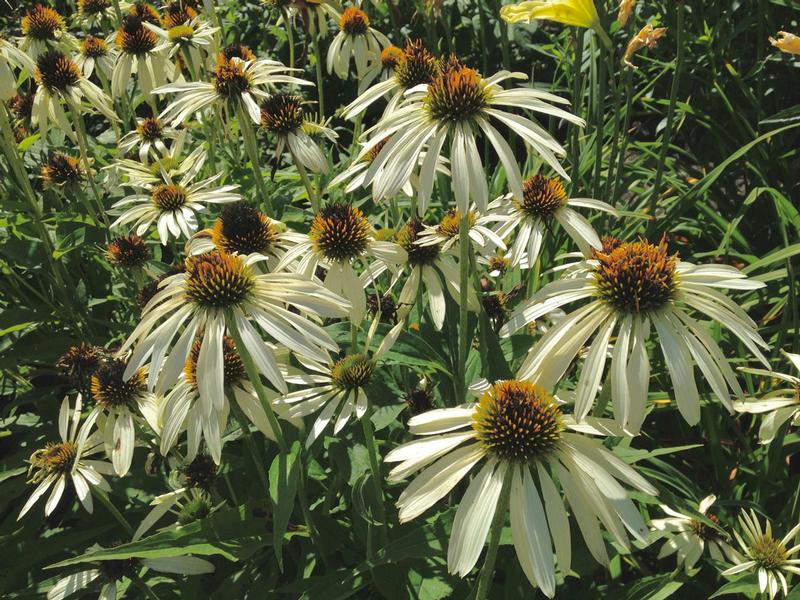
Using White Flowers to Create a Mood
In garden design, white can also be used to influence how we feel in a certain space. It can make a garden look chic and elegant, quiet and calm, or cool and fresh. Here are a couple examples.
Quiet and Calm. White flowers reflect light and dark colors absorb it. In the morning and evening when the light is low, white flowers seem to come toward us while dark colors recede. Their soft, moon-like glow is serene and it feels natural to slow down and speak softly.

Cool and Fresh. In hot climates, shady gardens provide a welcome escape from the heat. White flowers can be used to accentuate this feeling of coolness.
A shady garden also makes it easier to appreciate the textural variations in foliage and flowers: the smoothness of hosta leaves, the fuzzy flowers of astilbe or the waxy petals of an Oriental lily.
Chic and Elegant. White can also be upscale and refined. Think about a crisp white shirt or a simple strand of pearls. There’s a classic, timeless quality to white flowers and they tend to look more sophisticated than their rainbow relatives. Hosting a wedding in your garden? White flowers are a must (see a list of suggestions below).
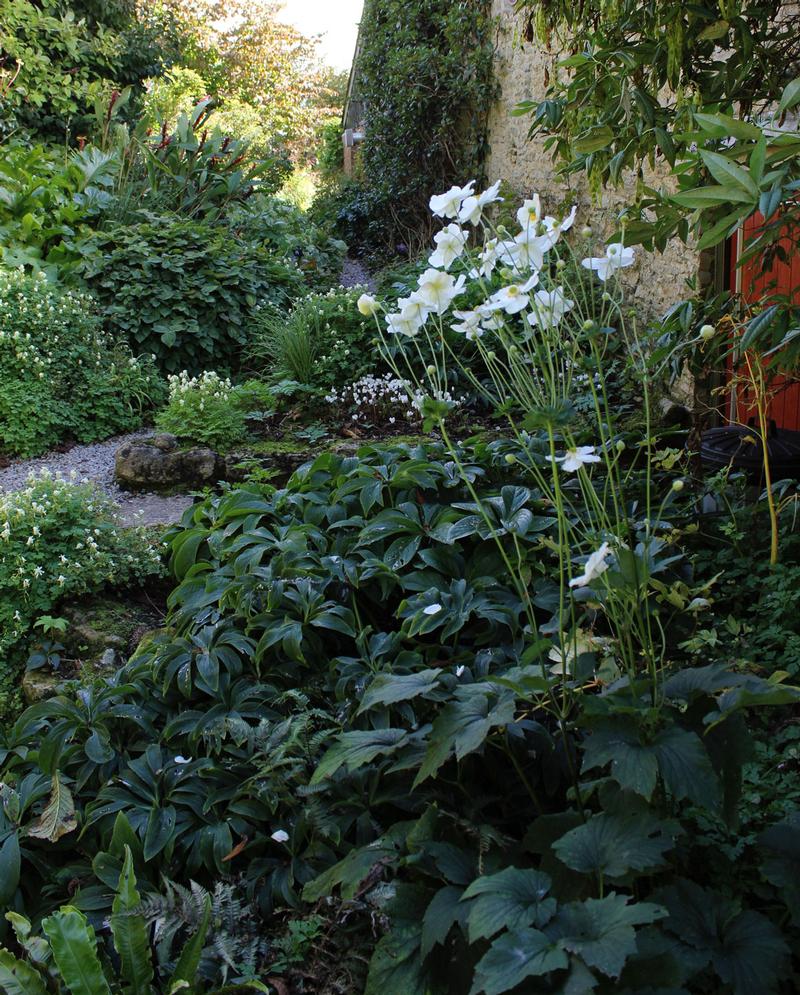
The Importance of Foliage
White flowers need to be partnered with foliage to look their best. It’s the contrast against a rich, green background that gives white flowers both their crisp definition and their ethereal magic.
Cool white flowers are best paired with plants that have a blue cast, such as silvery artemisia, stachys and grey-blue hosta. Greys and silvers will soften white flowers and help them blend rather than stand out.
Creamy whites usually look better with warm, yellowy greens such as alchemilla, euphorbia or hakonechloa. Plants with bronze or brown foliage are also good companions for warm whites. Consider heucheras, ajuga and rodgersia.
Ornamental grasses work well with white flowers and help integrate them into the landscape. Consider grasses with variegated foliage such as Miscanthus sinensis ‘Morning Light’, Miscanthus sinensis ‘Cosmopolitan’ and Calamagrostis ‘Overdam’.
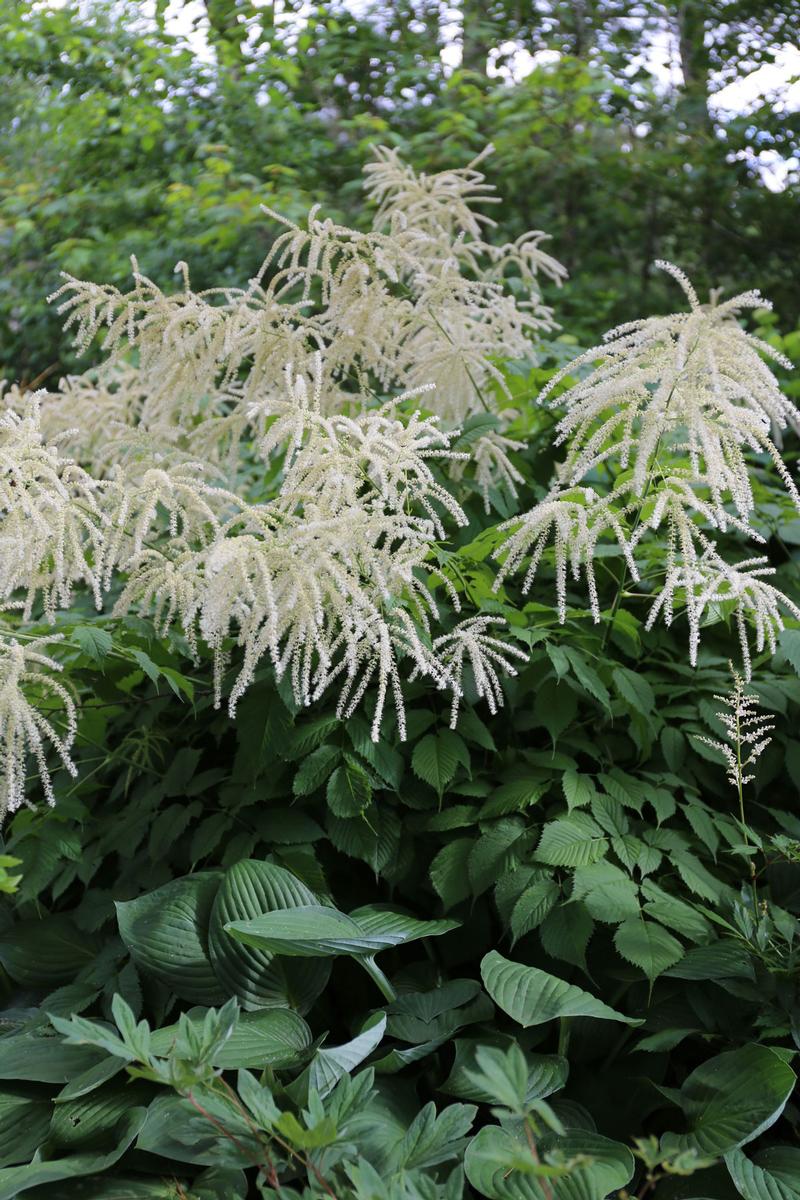
Using White Flowers for Accents and Pacing
White flowers are striking and grab our attention. This is why if you use too many of them, you can wind up with a garden that’s just as loud and unsettling as one that's filled with red and orange flowers.
The best way to use white is judiciously: for creating pacing and rhythm, for emphasizing contrasts and to create interruptions. Remember to work with the shapes of flowers and foliage, whether they are tall and spiky or soft and mounding. The goal should always be to create pleasing shapes in the landscape.
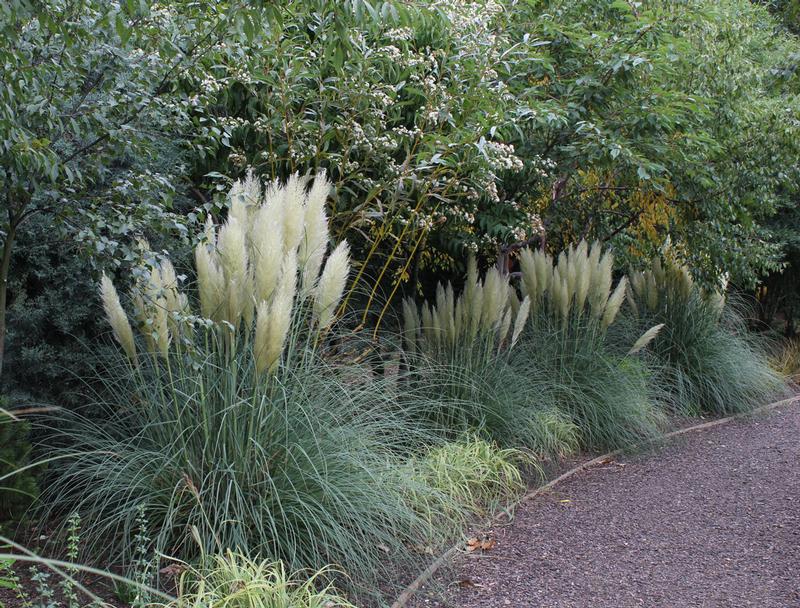
Another way to incorporate white is via garden structures and hardscaping. Consider adding a white pergola or obelisk, a white garden bench or a section of white picket fence.
White flowers also look great in pots and planters, and this makes it easy to move them around wherever you need something beautiful. Some good candidates for pots includes: pelargonium (annual geraniums), euphorbia 'Diamond Frost', petunias and eucomis autumnalis.

Plants with White Flowers or Foliage
The list below includes more than seventy annuals, perennials and bulbs that have white flowers, plus two dozen shrubs and trees. In some cases there are recommended varieties. In others, white may be the only color available for that species. And for some you will need to seek out the cultivars that have white flowers.
White Annual Flowers and Bulbs
Acidanthera
Allium Mt Everest
Allium nigrum
Alyssum
Amaryllis
Ammi majus
Baby’s breath (annual)
Caladium
Calla
Camassia
Cleome Helen Campbell
Cosmos
Crocus
Daffodils
Dahlias
Datura.
Geranium (Pelargonium)
Gladiolus
Hyacinths
Impatiens
Leucojum
Moonflower (Ipomoea violacea)
Nicotiana alata
Petunias
Snowdrops
Stock
Sweet peas
Tulips
White lace flower (Orlaya grandiflora)
Zinnias
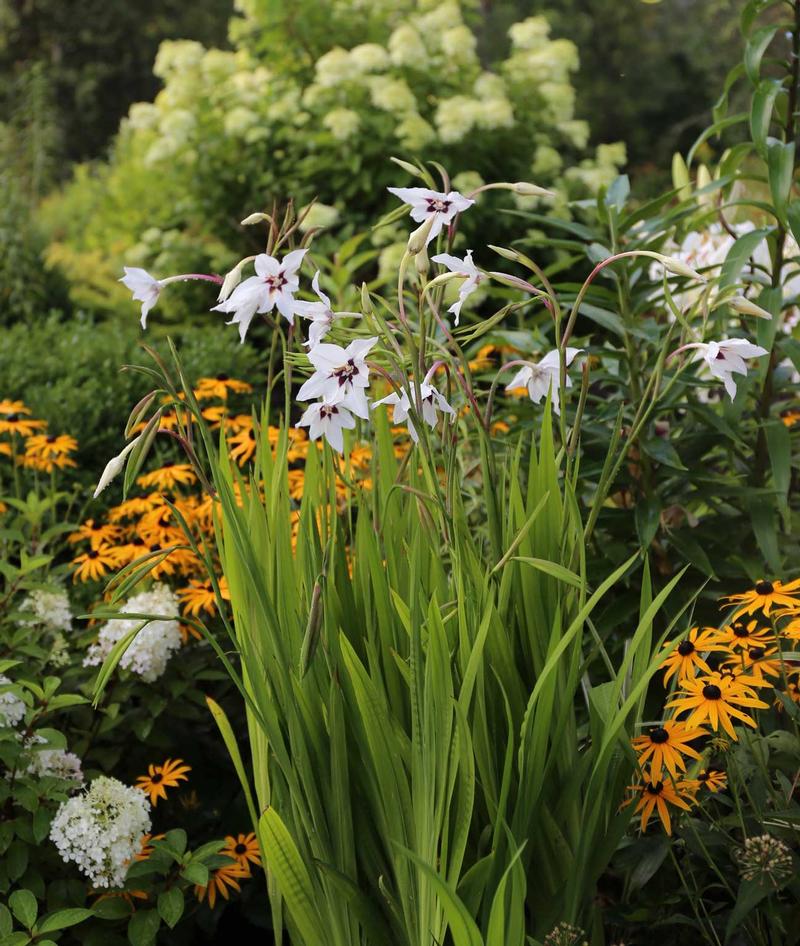
White Perennial Flowers
Achillea
Actaea
Agapanthus
Anemone nemerosa
Arabis
Aruncus
Aster
Astilbe
Baby’s breath
Campanula
Candytuft (Iberis)
Chamomile (Anthemis cupaniana)
Centranthus valerian
Chrysanthemum
Crambe cordifolia
Creeping phlox (Phlox subulata).
Delphinium
Dianthus
Echinacea
Foxglove (Digitalis)
Galtonia
Garden phlox
Gaura
Geranium
Gillenia
Gypsophilia
Hellebore
Hollyhock
Hosta
Iris
Japanese anemone
Jasmine, lilies
Lily of the valley
Peonies
Primula
Salvia Victoria White
Sanguinaria (bloodroot)
Shasta daisy ‘Becky’ (Leucanthemum)
Solomon’s seal (Polygonatum odoratum ‘Variegatum’)
Tiarella
Trillium
Veronicastrum
White bleeding heart (Dicentra)
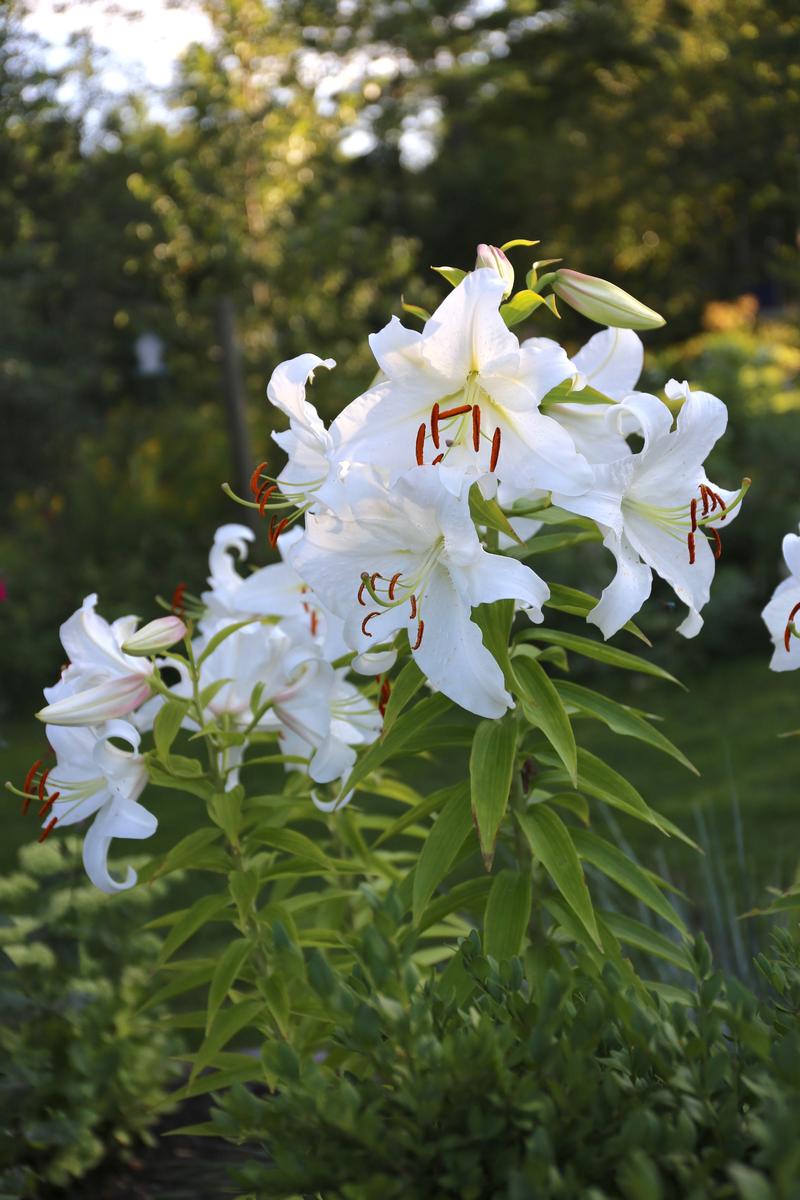
White Vines, Shrubs and Small Trees
Amelanchier
Azalea
Buddleia
Cherry
Clematis
Clethra
Climbing hydrangea (hydrangea petiolaris)
Climbing roses
Crab
Deutzia gracilis
Dogwood
Euonymus Emerald Gaiety
Fringe tree (Chionanthus)
Hydrangeas
Lilac
Magnolia
Mock orange (Philadelphus)
Pear
Rhododendron
Shrub roses
Snowberry
Spirea
Sweet autumn clematis
Viburnums
Wisteria floribunda Alba
Juniper Blue Star, Skyrocket and Moonglow
Blue spruce Cedar Blue Ice
To learn more about using color in your flower garden, you may be interested in reading: Garden Color 101, How to Use Burgundy in Your Flower Garden, How to Use Pink in Your Flower Garden, How to Use Red in Your Flower Garden, How to Use Purple in Your Flower Garden and How to Use Orange in Your Flower Garden.
